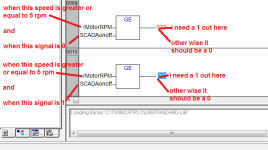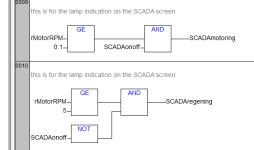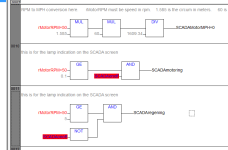[email protected]
Member
Hello
i am using TwinCAT and am having trouble creating a function that i want.
basically this is what i want:
i have two conditions that when fulfilled i want to create a digital output.
i have a digital output signal and an encoder speed signal. i want a digital signal to be created in the plc program when the digital output signal is active and the speed signal is greater or equal to 5 RPM
is there some function block i can use to do this or some threshold block?
thanks
i am using TwinCAT and am having trouble creating a function that i want.
basically this is what i want:
i have two conditions that when fulfilled i want to create a digital output.
i have a digital output signal and an encoder speed signal. i want a digital signal to be created in the plc program when the digital output signal is active and the speed signal is greater or equal to 5 RPM
is there some function block i can use to do this or some threshold block?
thanks










